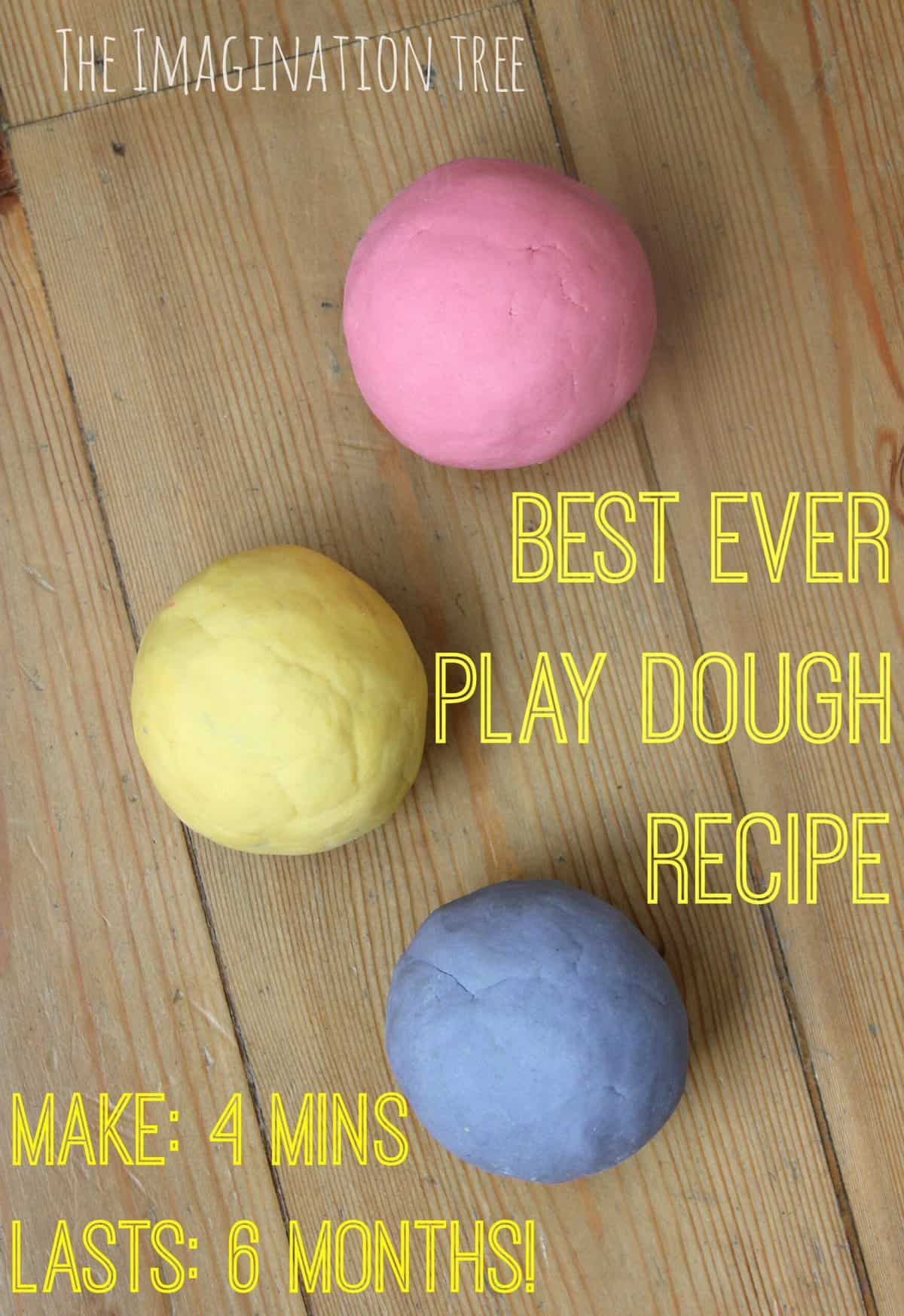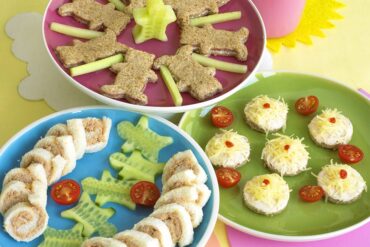Easy No-Cook Playdough Recipe for Endless Fun at Home
Welcome to the vibrant world of homemade playdough where creativity knows no bounds! As a parent, you’re always looking for engaging and educational activities for your little ones, and what could be better than a no-cook playdough recipe that is simple, safe, and provides hours of fun? Not only is it a fantastic way to encourage sensory play and fine motor skills development, but making playdough with your children can be quite the delightful bonding experience. So, roll up your sleeves, and let’s dive into the colorful realm of DIY playdough!
Why Choose Homemade Playdough?
Before we get our hands doughy, let’s explore why homemade playdough is an excellent choice for families:
- Non-toxic: Knowing exactly what goes into your playdough means it’s safe for kids, especially those who are prone to explore with their mouths.
- Cost-Effective: Homemade playdough is a highly affordable alternative to store-bought brands and uses common kitchen ingredients.
- Customizable: You get to choose the colors, scents, and textures, making each playdough session unique and tailored to your child’s preferences.
- Eco-Friendly: By opting for homemade, you reduce plastic packaging waste, contributing to a healthier planet for your children’s future.
What You’ll Need for Your No-Cook Playdough
Our no-cook playdough recipe is incredibly straightforward and, better yet, doesn’t require any special tools or ingredients. Here’s what you’ll need to whip up a batch of this pliable fun:
- 2 cups of all-purpose flour
- 1/2 cup of salt
- 2 tablespoons of cream of tartar
- 2 tablespoons of vegetable oil
- 1 1/2 cups of boiling water
- Food coloring (optional)
- Essential oils for scent (optional)
- Glitter or other add-ins for texture (optional)
Now that we’ve gathered our ingredients let’s get to the fun part – making the playdough!
Step-by-Step: Your Ultimate No-Cook Playdough Guide
Follow these simple instructions, and you’ll have perfect playdough every time:
- Start Mixing Dry Ingredients: In a large mixing bowl, combine 2 cups of flour with 1/2 cup of salt and 2 tablespoons of cream of tartar.
- Add Wet Ingredients: Mix in 2 tablespoons of vegetable oil. If you’re using food coloring, add it to the 1 1/2 cups of boiling water first, then pour the colored water into the mixture gradually.
- Stir It Up: Stir the mixture with a spoon until it starts to form a dough. If you’ve chosen to add scent or texture, now is the time to put in a few drops of essential oils or a sprinkle of glitter.
- Knead the Dough: Once the dough has cooled enough to handle, take it out of the bowl and knead it on a clean surface. The dough may feel sticky at first but keep kneading until it’s smooth and pliable.
- Time for Fun: Your playdough is ready to use! Encourage your children to roll, cut, and shape the dough into whatever their hearts desire.
With this easy no-cook playdough recipe, the creative possibilities are countless. Whether it’s for a rainy day, a playdate, or just some spontaneous fun, this activity is sure to be a hit with kids of all ages. And the best part? Cleanup is a breeze, and your homemade playdough can be stored for future play sessions.
Remember, the joy of homemade playdough isn’t just in the playing; it’s in the making too! So, don’t hurry through the process. Take this opportunity to engage with your children, teach them about measuring, mixing, and transforming simple ingredients into something magical. Your little ones will not only practice cognitive and motor skills but also learn valuable lessons in patience and creativity.
Keep reading to find out our top tips for keeping your homemade playdough fresh, vibrant, and ready for play, along with fun playdough activity ideas to spark your child’s imagination!
Stay tuned for more fun, parents and kiddos – the playdough party is just getting started, and the best is yet to come!

Five Key Tips for Preparing No-Cook Playdough
Before you embark on your playdough adventure, here are five essential things every parent should know:
- Boiling Water Safety: Since the recipe involves boiling water, ensure children are at a safe distance during this step. They can watch from afar and be involved in the later, cooler stages!
- Quality of Ingredients: Use high-quality food coloring and essential oils if you opt for a colorful and scented experience. This will keep the playdough looking bright and smelling pleasant over time.
- Consistency Control: The amount of flour and water can slightly vary depending on humidity and altitude. If your playdough is sticky, add a little more flour; if it’s too dry, add a few drops of water.
- Color Blending: To get vibrant colors, use gel food coloring instead of liquid ones as they tend to be more concentrated. Mix colors together to teach children about color blending and create a wider palette of colors to play with.
- Storage Solutions: To keep playdough soft and pliable for as long as possible, store it in an airtight container or zip-lock bag. Even better, keep it in the refrigerator to extend its freshness!
Keeping Your Playdough Fresh and Fun
Maintaining the quality of your homemade playdough is key to ensuring it remains a staple for playtime. Here are additional pointers for keeping it in tip-top condition:
- Airtight Storage: Remember to remove air from bags or containers before sealing to protect the playdough from drying out.
- Monitor Playdough’s Condition: Check the dough before and after play for signs of drying or crumbling and refresh it with water or oil as needed.
- Careful with Add-ins: While glitter and other materials can be fun, they can also make the dough harder to maintain. Use these sparingly and know that texture may change over time.
For those of you who may have concerns about the shelf life of your freshly made playdough, rest assured, it typically lasts for several months with proper care. A simple sniff test will let you know if it’s time to whip up a new batch!
Unlocking Creativity: Playdough Activity Ideas
With your no-cook playdough ready, it’s time to spark some creativity. These activities are a fantastic way to expand the playdough experience:
- Cookie-cutter shapes: Use kitchen cookie cutters to make interesting shapes and inspire storytelling.
- Create a playdough garden: With green dough for plants and colored flowers, the kids can design a delightful garden.
- Playdough pals: Encourage the creation of playdough creatures, from simple worms to more complex figurines.
- Learning letters and numbers: Forming letters and numbers with playdough is a tactile way to foster early literacy and numeracy skills.
- Imprints and textures: Using household objects to make imprints on the dough can create a sensory exploration activity.
Each of these suggestions is not only fun but also boosts cognitive development, problem-solving skills, and fine motor skills. The interaction with different textures and colors during play also enhances sensory awareness.
Engage with your kids, encourage them to tell stories about their creations, and don’t forget to join in! There’s nothing like the bonding experience of shared play, and when it comes to homemade playdough, everyone gets to be a kid again.
Now that you have your own no-cook playdough recipe and plenty of ideas to get you started, it’s time to create, explore, and cherish the joyful moments of playtime. Remember, it’s not just about the end product but about the memories you create along the way. Let the fun begin!
See more great Things to Do with Kids in New Zealand here. For more information see here
Disclaimer
The articles available via our website provide general information only and we strongly urge readers to exercise caution and conduct their own thorough research and fact-checking. The information presented should not be taken as absolute truth, and, to the maximum extent permitted by law, we will not be held liable for any inaccuracies or errors in the content. It is essential for individuals to independently verify and validate the information before making any decisions or taking any actions based on the articles.




